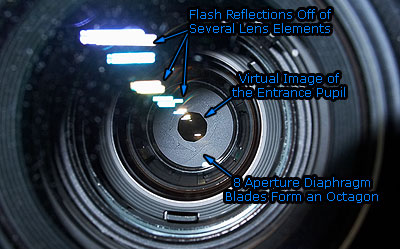Sigma DP1 and Polaroid X530 are the only 2 point and shoot cameras with Foveon sensors that I am aware of.
I wonder if the magic behind the Foveon sensor will be revealed in an article on this website. That would be so cool
1) Now does anyone know the size of the Polaroid X530 sensor? I tried to research it a lot, but couldn't find information about its size. I know the Sigma DP1 is just about APS-C sized about 21 by 14 or so, and I am wondering if the Polaroid supports the same sensor?
2) People on the internet are hotly debating whether the DP1 can produce out of focus pictures like DSLR's with same size sensors. Now considering that it has a prime lens of 28mm (16.5mm x 1.7) at a max aperture of f/4, I would like to hear opinions on what you think about the bokeh and the quality of portrait photos (since you have to get close to fill in the frame).
Thanks,
Elie
EDIT:
Using the calculator focused at 1 meter - can we deduce anything about the bokeh from that?
 Helpful Posts: 0
Helpful Posts: 0
Results 1 to 3 of 3
Thread: Size of Foveon Sensors & Bokeh
-
18th April 2008, 02:29 AM #1
Size of Foveon Sensors & Bokeh
Last edited by xeliex; 18th April 2008 at 03:00 AM. Reason: fixing focal length
-
18th April 2008, 05:09 PM #2Administrator

- Join Date
- Apr 2008
- Location
- California, USA
- Posts
- 1,473
- Real Name
- Sean
Re: Size of Foveon Sensors & Bokeh
The Foveon camera sensor on the Polaroid X530 camera is a standard 1/1.8" type (7.1 x 5.3 mm effective widthxheight), which is very common amongst compact digital cameras.
However, this will mean that it will be much more difficult to achieve a shallow depth of field than with an SLR camera--and hence minimal bokeh (the out of focus parts of the image).
If you want to get a shallow depth of field using a compact camera, there are only a few options if you do not want to get a lens adapter.
(1) Use subjects with a very close focusing distance / high magnification. To focus even closer than normal, most compact cameras have a "macro mode", which effectively makes the depth of field even more shallow.
(2) Use the largest aperture setting possible. For compact cameras, this can be anywhere from f/2.0 (rare), to f/2.8 (more common) to f/3.5 or so. Take a look at the tutorials on camera lenses and/or depth of field for more on the effect of aperture settings.
-
18th April 2008, 05:14 PM #3Administrator

- Join Date
- Apr 2008
- Location
- California, USA
- Posts
- 1,473
- Real Name
- Sean
Re: Size of Foveon Sensors & Bokeh
One word of caution though: the sensor just impacts how much control you have over depth of field (which is less for compact cameras, and can be seen as either an advantage or a disadvantage).
However, the sensor size/type does not impact *how* the bokeh will actually look--this is controlled by the camera lens. In particular, it depends on how many blades there are in the iris that opens and closes the lens like an eye.
The number of blades impact the familiar hexagonal, pentagonal, etc shapes of out of focus highlights you may be familiar with. 8 blades produces octagons, 6 blades hexagons, etc. The arrow labeled "virtual image of entrance pupil" corresponds to the location of the iris of aperture blades. (This diagram also includes other labels, however those are not applicable to bokeh since this image was originally intended for a different topic.)



 Reply With Quote
Reply With Quote

